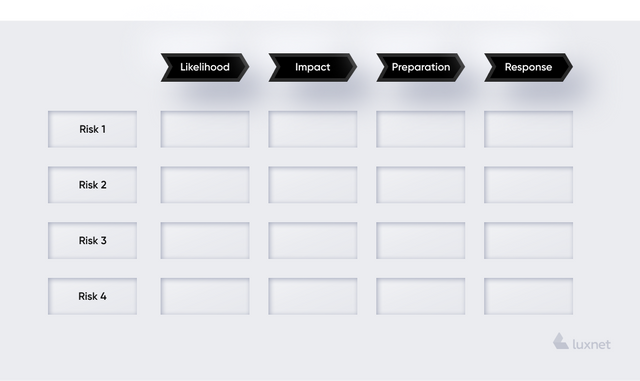In this article, we will explain to you what is a contingency plan in business, risk management and the negative impact of the external environment. Most importantly, we will tell you how to mitigate the possible "falling".
"Hope for the best, prepare for the worst" - a slogan that can be applied to build a strategy for a personal life :) At the same time, it can prove useful for a business.
When a crash, unforeseen situation or crisis occurs, the consequences are difficult to avoid. Internal and external risk factors have a significant influence on the situation. And what you need to do is create a contingency plan, especially if you are the founder of a startup.
What is a business contingency plan?
A good business can be compared to a Swiss watch. Everything must function continuously, accurately and efficiently. That is when the product will be popular, and the company will be credible. Nevertheless, unforeseen situations can sometimes happen.
We could give hundreds of business contingency cases, but we have an absolute favourite example: the Covid-19 pandemic. Was anyone preparing for this situation? It is unlikely.
However, a business can accurately predict certain risks that you will have to deal with (or give up - the situation, in fact, depends on having/ not having an anti-crisis plan). Crisis management is not a matter of a few days or months. But first, you need the plan.
The contingency plan is a series of actions that have to be taken during a crisis. Here we can add the following aspects:
- Does the company have a financial reserve if there is a crisis?
- Where can your team continue working if the building, where the office is located, is damaged?
- How to optimize the work quickly and efficiently during a crisis?
How to write a contingency plan for a business?
1. Create a list of priority resources.
Not all resources will be crucial to your business. Anyway, you will have to cut some of them. Until a crisis arises, you can calmly decide what resources you will have to sacrifice first of all.
2. Create a financial cushion.
That is an important item for every business. Unforeseen expenses can push the company into the red, and it will be difficult to get out of the debt pit. If you have some savings at least for a start, it will be easier to get out of a crisis.
3. Create a plan for the main challenges.
What are the risks in your business? What can happen? What is the worst thing that could occur? What are the ways out of these situations? What is the experience of other companies in similar circumstances? This point requires detailed research of the internal factors of the company and the external market. Carry out a thorough risk assessment.
You can also interview your colleagues. What possible obstacles do they see? How can the situation be improved before a crisis occurs?
4. Test your business continuity.
Your plan should not be utopian, but real. All aspects must fit into reality. You should not, for example, prescribe measures that your company will not be able to implement. Remember: business continuity is the company's ability to maintain its business and essential business functions during and after a breakdown. Asset protection needs to be clear and fragmented - one person is unlikely to control all aspects, so it is better to divide responsibilities among people and discuss the strategy together.
5. Update your business plan.
The world is very changeable for your plan to inspire confidence and trust for ten years. That is why you always need to monitor new methods, the experience of leading companies and the external marketing environment.
When should you create a contingency plan?
The best option is to discuss strategies comprehensively. As a rule, the results are summarized, and a list of goals is established during the annual planning. That's when you should also determine what risks you need to be ready for the next year. Moreover, if additional risks appear, don't forget to update your plan in the coming months.
For example, there is a strong competitor in the market that can entice a part of your target audience. How to act in this case? What are the short-term and long-term goals?
Another example is the coronavirus pandemic that has not stopped yet. What are the possible obstacles in 2021? How to (continue) fight them?
An example of a plan
If you are going to start developing a plan on how to deal with possible risks, you can use the following sample:

Here you can specify such criteria as likelihood, impact, preparation, and response for each risk.
Conclusions
Creating an anti-crisis plan for a startup is a perfect opportunity to assess the challenges, business risks and possible obstacles that may arise along the way. There is no need to run ahead with the goals of restoring the situation. Though, to build a strategy for the company with the slogan "Hope for the best, prepare for the worst" is the right option to make the fall less painful.
